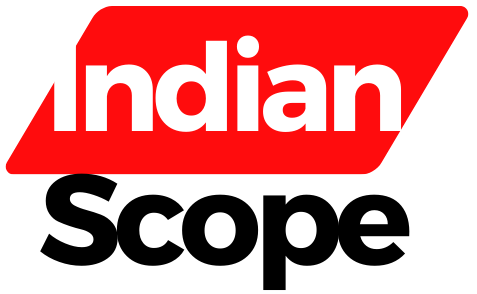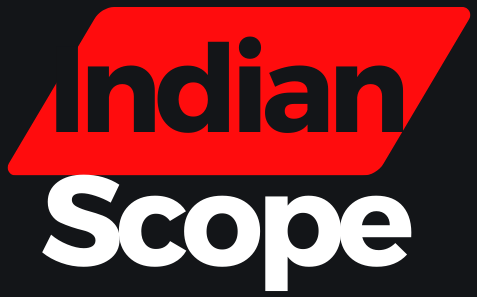Ekadashi Fasting Rules: Fasting on Ekadashi is one of the most important spiritual practices followed in ISKCON (International Society for Krishna Consciousness). It’s not just about skipping meals—it’s about purifying the mind and body to deepen devotion to Lord Krishna.
If you’re wondering how to properly observe Ekadashi fasting according to ISKCON’s teachings, you’re in the right place. This guide will walk you through its significance, the right way to fast, foods to avoid and eat, rituals, and how to break the fast correctly.
What is Ekadashi and Why is it Important in ISKCON?
Ekadashi falls on the 11th day of both the waxing (Shukla Paksha) and waning (Krishna Paksha) moon phases, meaning there are two Ekadashis each month. In ISKCON, fasting on Ekadashi is considered a direct service to Lord Krishna, allowing devotees to increase their spiritual strength and avoid sinful reactions.
The Padma Purana states that observing Ekadashi washes away past sins and helps one progress toward moksha (liberation). Lord Krishna Himself advised Arjuna in the Mahabharata that Ekadashi fasting is one of the best ways to please Him.
How is Ekadashi Fasting in ISKCON Different from a Regular Ekadashi Fast?
Many Hindus observe Ekadashi, but ISKCON follows stricter guidelines compared to general traditions. Here’s how ISKCON’s Ekadashi fasting differs from a regular Ekadashi fast:
1. Complete Prohibition of Grains and Pulses
- Regular Ekadashi: Some people avoid only rice or wheat but may still consume lentils or grain-based products.
- ISKCON Ekadashi: No grains or pulses whatsoever, including wheat, rice, dal, besan (gram flour), and corn-based foods.
2. Emphasis on Devotional Activities
- Regular Ekadashi: Many people focus on avoiding food but may not engage in deep spiritual practices.
- ISKCON Ekadashi: Devotees spend the entire day in bhakti, chanting extra rounds of the Hare Krishna Mahamantra, reading Srimad Bhagavatam, and performing kirtan.
3. Special ISKCON Ekadashi Foods
- Regular Ekadashi: Some people eat whatever vegetarian food is available, including tomatoes, grains, and pulses.
- ISKCON Ekadashi: Special sattvic (pure) diet, including root vegetables, dairy, fruits, and buckwheat. Cooking is done without garlic, onions, mustard seeds, or tamasic ingredients.
4. The Importance of Dwadashi Parana (Breaking the Fast on the Next Day)
- Regular Ekadashi: Some break the fast at any time the next morning.
- ISKCON Ekadashi: The fast must be broken at the proper time on Dwadashi (the 12th lunar day), following Vedic scriptures.
5. Focus on Seva and Self-Purification
- Regular Ekadashi: Some people may see it as just a ritual or family tradition.
- ISKCON Ekadashi: It’s considered an opportunity to serve Krishna with full dedication, not just a day of avoiding certain foods. Devotees also engage in charity, temple seva, and preaching Krishna consciousness.
6. More Frequent Fasting in ISKCON
- Regular Ekadashi: Some people observe only a few Ekadashis a year.
- ISKCON Ekadashi: Devotees fast on all Ekadashis without fail, as per Srila Prabhupada’s instructions, seeing it as a necessary spiritual discipline.
7. No Commercially Processed Food
- Regular Ekadashi: Some may eat packaged or processed vegetarian snacks.
- ISKCON Ekadashi: Only freshly prepared, homemade Ekadashi prasadam is consumed. No outside food or restaurant meals.
16 Monday Fast Rules: A Guide to Solah Somwar Vrat
Significance of Ekadashi in ISKCON
ISKCON follows Ekadashi fasting strictly as an act of devotion to Krishna. The belief is that food, especially grains and pulses, contains sinful reactions on this day. By avoiding them, devotees keep their consciousness pure and make spiritual progress.
Many ISKCON followers also increase their chanting of the Hare Krishna Mahamantra on Ekadashi to maximize spiritual benefits:
“Hare Krishna, Hare Krishna, Krishna Krishna, Hare Hare,
Hare Rama, Hare Rama, Rama Rama, Hare Hare.”
This helps maintain a pure heart, deepens devotion, and strengthens self-discipline.
Types of Ekadashi Fasts Observed in ISKCON
Fasting intensity varies depending on one’s capability and spiritual advancement. Here are the different types of Ekadashi fasting methods in ISKCON:
1. Nirjala Ekadashi (Complete Fast – No Food or Water)
- The strictest form of fasting.
- No food, no water for 24 hours.
- Only for those who are physically capable.
- Grants the benefits of all 24 Ekadashis combined (according to Mahabharata).
2. Anukalpa Ekadashi (No Grains, Simple Diet)
- This is the most commonly followed fast in ISKCON.
- Devotees avoid grains and pulses but can eat fruits, dairy, nuts, and root vegetables.
3. Phalahar Ekadashi (Only Fruits and Milk)
- Devotees eat only fruits, milk, and water.
- No cooked foods, but herbal teas, coconut water, and honey are allowed.
4. Water-Only Fast
- Only water is consumed throughout the day.
- Suitable for advanced devotees and those who can handle fasting easily.
👉 You can choose the type of fasting based on your health and spiritual determination.
Ekadashi Fasting Rules According to ISKCON
To observe Ekadashi properly, certain foods are strictly avoided and specific devotional activities are recommended.
1. What to Avoid on Ekadashi
🚫 Grains and Pulses
- Rice, wheat, lentils, chana (chickpeas), corn, and anything made from flour (chapati, bread, pasta).
🚫 Onions and Garlic
- Considered tamasic (impure) and not suitable for Ekadashi fasting.
🚫 Meat, Eggs, and Alcohol
- Completely prohibited in ISKCON at all times, but especially on Ekadashi.
🚫 Certain Spices
- Mustard seeds, fenugreek, and asafoetida (hing) are avoided.
2. Permitted Foods on Ekadashi
✅ Fruits and Nuts
- Bananas, apples, oranges, grapes, cashews, almonds, walnuts.
✅ Dairy Products
- Milk, buttermilk, paneer (cottage cheese), yogurt (without added starch).
✅ Root Vegetables
- Potatoes, sweet potatoes, pumpkin, arbi (taro root).
✅ Ekadashi Grains (Non-Regular Grains)
- Buckwheat (kuttu), amaranth (rajgira), water chestnut flour (singhara).
✅ Spices Allowed
- Black pepper, rock salt, green chilies, cumin, coriander.
🍲 Common ISKCON Ekadashi Dishes:
- Sabudana khichdi (tapioca pearls with peanuts).
- Kuttu puri (buckwheat flour roti).
- Aloo jeera (potatoes with cumin).
- Coconut laddoo (sweet coconut balls).
Rituals and Activities on Ekadashi
1. Morning Practices
- Wake up before sunrise.
- Take a bath and wear clean, simple clothes.
- Offer prayers to Lord Krishna, Radha, and Vishnu.
- Chant extra rounds of the Hare Krishna Mahamantra (16+ rounds if possible).
2. Daytime Devotional Activities
- Read Srimad Bhagavatam or Bhagavad Gita.
- Avoid distractions like TV, gossip, or unnecessary talk.
- Perform Tulsi puja (worshipping the holy basil plant).
3. Temple Visits and Kirtan
- If possible, visit a nearby ISKCON temple.
- Participate in kirtan (devotional singing).
- Engage in seva (service) at the temple.
Breaking the Fast (Parana Vidhi) as per ISKCON
Breaking the fast correctly is just as important as keeping it.
1. Parana Time (When to Break the Fast)
- The fast should be broken on Dwadashi (the 12th lunar day) after sunrise.
- If you delay breaking the fast beyond this time, the benefits of fasting decrease.
2. How to Break the Fast Properly
- First, offer food to Lord Krishna.
- Drink Tulsi water or charanamrita (temple-offered water).
- Start with fruits or light Ekadashi prasadam before moving to heavier meals.
- Avoid overeating immediately after breaking the fast.
Spiritual and Health Benefits of Observing Ekadashi
Spiritual Benefits
✅ Cleans past sins and purifies the soul.
✅ Increases devotion and Krishna consciousness.
✅ Grants spiritual strength and discipline.
✅ Helps control material desires and attachment.
Health Benefits
✅ Detoxifies the digestive system.
✅ Improves self-discipline and mental clarity.
✅ Enhances metabolism and digestion.
Conclusion
Observing Ekadashi according to ISKCON guidelines is not just about avoiding food—it’s about deepening devotion to Krishna. Whether you choose Nirjala, Anukalpa, or Phalahar fasting, what matters most is sincerity and commitment.
Saturday Fasting Rules: A Complete Guide to Shanivar Vrat






